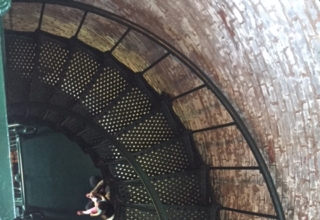
Backward Vision
A second lens operates like the rearview mirror on an automobile. With this lens we work backwards in our planning process. We begin with our distal goals (3-5 years from now). We then identify what should be accomplished during the coming two years if we are to achieve the distal goals. Our attention then is directed to the coming year. What can be done to ensure success (or at least increase its probability) in two years. Finally, what can be done right now on behalf of our one-year goals. In this way, we move from strategic to tactical planning.
Given the value of contingency planning in our VUCA-Plus environment, several different conditions might be identified that must be considered when planning for the long-term (3-5 years), then the short-term (2 years), and finally the upcoming year. This would lead to the generation of several different tactical plans for the coming year—alongside of criteria for determining which of these plans to engage at any one time during the coming year. Ironically, predicting backwards and moving from distal to proximal might be one of the most effective ways of being adaptive in our changing world. We project ourselves forward in an unpredictable world and use this projection to set appropriate parameters for our immediate predictions.
Illuminating Vision
The third lens is one that magnifies and illuminates. It is a lens of learning that can be applied when planning for, adjusting to, and finding success and failure midst a journey into the future. Otto Scharmer (2009) writes about “learning into the future.” I would suggest that this means we are preparing not only for future initiatives but also for processes that enable one to learn from the relative successes and failures that occur on the way to some desired end goals. Our immediate predictions are improved because we are open to learning. We have created a “learning environment” that makes this possible.
The critical question becomes: how can a “learning environment” be established and sustained? Accompanying questions must also be addressed. How can slow thinking be ensured (Kahneman, 2011)? What types of assessment—both quantitative and qualitative—can be used? In what way can sessions be designed and facilitated to ensure safety in timely reflections on the successes and failures? How can the process of implementation be designed so that mistakes (which are inevitable in a VUCA-Plus environment) are not repeated multiple times (Argyris and Schön, 1978)? How can mistakes be turned into “teachable/learning-ful moments”? What can be done right now to increase the probability that higher order learning can take place during moments of reflection on what is taking place (Kegan, 1982; Kegan, 1994: Vaill, 1996)? This means reflecting on the learning process itself and potentially revising this process.














